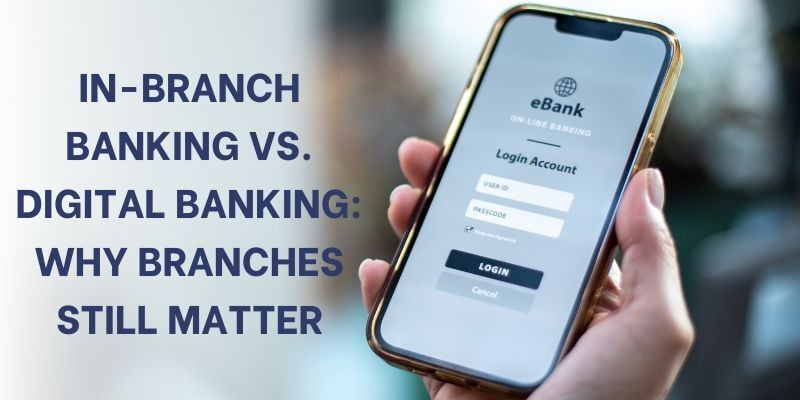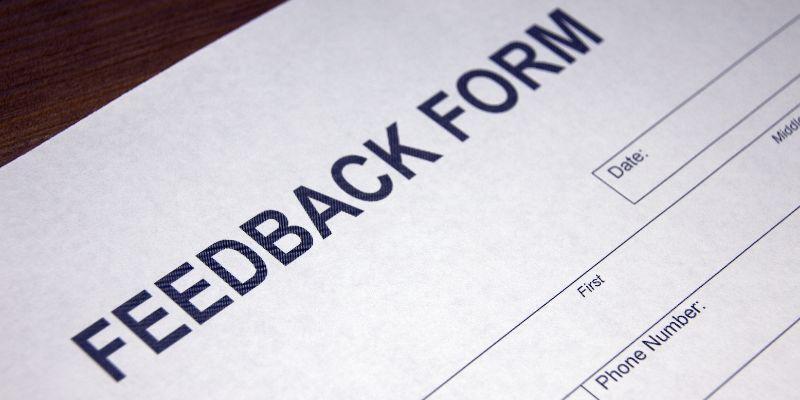The retail banking customer journey map is essential for banks seeking to understand how customers interact with their services at various stages.
This map outlines the key touchpoints where customers engage with the bank, from opening an account to applying for a loan or using digital platforms like mobile apps or online banking.
Understanding this journey allows banks to identify where customers encounter challenges and the moments that create lasting positive impressions.
Banks can improve customer satisfaction, build loyalty, and increase overall efficiency by focusing on these interactions.
The purpose of creating a retail banking customer journey map is to create a clearer picture of the customer’s experience, enabling banks to tailor their products, services, and communication strategies to effectively meet customers’ needs and expectations.
What Is Customer Journey Mapping in Banking?
Customer journey mapping in banking visually represents a customer’s entire experience with a bank, from initial awareness to the final interaction.
This map contains every touchpoint where customers interact with the bank, including physical branches, ATMs, call centers, websites, mobile apps, and social media platforms.
In retail banking, customer journey mapping helps to identify all customer interactions, emotions, and experiences, offering insights into what drives satisfaction and where frustrations may occur.
By examining each step in the customer journey, banks can pinpoint areas for improvement, such as reducing wait times, increasing customer service, or simplifying online banking processes.
The ultimate goal of customer journey mapping is to improve customer experience and ensure that the bank’s services are smooth and meet customer expectations.
This approach enables banks to build stronger customer relationships, increasing loyalty, customer retention, and overall satisfaction.
Creating a Retail Banking Customer Journey Map

Creating a retail banking customer journey map involves charting every customer interaction with a bank, from the first contact to ongoing engagement.
This process reveals key touchpoints, uncovers customer needs and highlights opportunities to augment the customer experience.
When mapping the customer’s journey in banking, banks can identify ways to rationalize operations, decrease friction, and improve customer satisfaction.
This approach also helps banks align internal processes with customer expectations, strengthening customer relationships and loyalty. Let’s take a look at how it is done :
1. Data Collection Methods
Collecting data is a critical step in mapping the retail banking customer journey. Banks gather information from various sources, including surveys, customer feedback, transaction histories, and digital analytics. These methods offer insights into customer behavior, preferences, and pain points.
Digital banking customer journey data is precious, as it captures interactions on websites, mobile apps, and other digital platforms.
This information helps banks understand how customers navigate their services, which touchpoints they use most, and where they might encounter issues.
2. Customer Segmentation
Customer segmentation is about grouping customers with similar characteristics within the banking customer journey.
This approach helps banks tailor their services and marketing strategies to specific customer needs. Segmentation can be based on demographics, such as age, gender, or income, or behavioral factors, such as account usage, transaction frequency, or digital banking preferences.
In the retail banking customer journey, segmentation allows banks to identify which customer groups require more personalized services and which are most likely to adopt new offerings.
By understanding each segment’s unique needs, banks can create targeted campaigns, design relevant products, and deliver a more satisfying customer experience.
3. Touchpoint Identification
Touchpoint identification is fundamental in creating a retail banking customer journey map. It involves listing all the places customers interact with the bank in person and online.
By mapping these touchpoints, banks can better understand customer journeys in banking and where they need to focus improvement efforts.
Physical Touchpoints
Physical touchpoints in a retail banking customer journey map include:
- Branches: The traditional face-to-face point of contact for customers, where they open accounts, apply for loans and seek customer service.
- ATMs / CDMs: Automated Teller Machines (ATMs) and Cash Deposit Machines (CDMs) allow customers to withdraw cash, deposit money, and perform other basic transactions without visiting a branch.
- Call Centers: These centers handle customer inquiries and provide support via phone.
Digital Touchpoints
Digital touchpoints in customer journeys in banking consist of:
- Websites: Banks’ websites are essential for providing information, online banking services, and customer support.
- Mobile Apps: Many customers use banking apps for convenience, to conduct transactions, and to track their accounts on the go.
- Social Media: Platforms like Facebook and Twitter serve as customer service and marketing communication channels.
- Online Chat: Live chat or chatbots offer real-time assistance to customers seeking help online.
4. Mapping the Customer Journey

Mapping the customer journey involves visualizing the steps customers take when interacting with a bank. This process helps banks understand the full scope of customer experiences and identify areas for improvement.
A retail banking customer journey map typically includes the following stages:
- Initial Contact: This could be through digital platforms like websites, mobile apps, or physical touchpoints like branches or ATMs.
- Account Opening: The process a customer goes through to create a new account, including online forms and in-person paperwork.
- Transactions: This covers routine activities like deposits, withdrawals, transfers, and payments.
- Customer Service: Moments when customers seek help or information, whether via call centers, online chat, or branch visits.
- Account Closure: The final step when a customer closes their account.
5. Analyzing Customer Pain Points
Analyzing customer pain points is critical to improving the bank customer journey map. These are moments where customers encounter frustration, confusion, or inconvenience.
For example, complex online banking processes, long wait times at branches, or unresponsive customer service can create significant pain points.
Banks can gather customer feedback through surveys and analyze data from digital banking solutions to identify these areas. This helps highlight common issues customers face.
Once identified, banks can implement changes to reduce conflict and improve the overall experience. A focus on resolving pain points is essential for creating an aligned retail banking customer journey map.
6. Moments of Truth
Moments of truth are critical interactions within a customer journey that significantly influence a customer’s perception of a brand. In banking, these can occur when a customer opens a new account, contacts customer service, or uses digital banking solutions for transactions.
A bank customer journey map example could include moments when customers need immediate support, such as when they experience technical issues with mobile banking or need assistance with a transaction.
Identifying these moments of truth allows banks to ensure these critical touchpoints deliver a positive experience.
When done right, these moments build trust and encourage customer loyalty, benefiting the bank’s reputation and customer retention.
7. Opportunities for Engagement
In a retail banking customer journey map, opportunities for engagement are the touchpoints where banks can actively interact with customers to build stronger relationships. These moments offer a chance to create a positive impression and add value to the customer experience.
For example, we engage with customers through personalized email campaigns, offer financial advice via digital platforms, or organize community events at branches.
Opportunities for engagement can also be found in digital banking, where banks can use in-app notifications or chatbots to keep customers informed and engaged.
8. Iterative Improvement
Iterative improvement is continuously refining the retail banking customer journey map. It involves regularly assessing the customer journey, gathering feedback, and making necessary adjustments to improve the overall experience.
This process ensures that the customer’s journey evolves with changing customer needs and industry trends.
Banks can use various data collection methods, like customer surveys and analytics from digital banking solutions, to understand where improvements are needed.
Through this iterative approach, banks can address pain points, improve touchpoints, and ensure that the customer journey is smooth and customer-friendly.
Examples Of Customer Journey Mapping in Banking

Customer journey mapping in banking provides insights into customer experiences across various touchpoints. By visualizing these interactions, banks can identify pain points, understand customer behaviors, and create tailored solutions.
Let’s explore cases where customer journey mapping transformed banking experiences, leading to notable improvements in service quality and customer loyalty.
1. Banque Saudi Fransi’s Digital Transformation with Wavetec
Banque Saudi Fransi (BSF), a major Saudi Arabian bank, collaborated with Wavetec to improve its digital footprint and customer experience.
By implementing Wavetec’s enterprise queuing solutions, BSF transformed over 100 branches across the Kingdom, reforming the banking customer journey and reducing wait times.
The solutions included mobile, virtual, linear, and WhatsApp Queuing.
These measures helped BSF improve service efficiency and customer satisfaction, but strategic planning and staff training addressed challenges like ensuring system integration and user adoption.
This case highlights how digital banking solutions can improve the bank customer journey map, driving customer satisfaction and operational efficiency.
2. HSBC Mexico Transforms Customer Experience with Wavetec’s Queue Management Solution
HSBC Mexico, part of the global financial network, collaborated with Wavetec to improve its retail banking customer journey.
The bank faced challenges managing a large customer base and reducing wait times in its 948 branches across Mexico.
Wavetec’s advanced queue management solutions provided a tailored approach to align the bank customer journey, reducing bottlenecks and improving service quality.
The implemented solution included self-service kiosks, real-time data analytics, and personalized ticketing, allowing customers to use their bank cards for priority service.
This led to reduced wait times, greater customer satisfaction, and centralized control of HSBC’s management. Wavetec’s configurable solutions addressed the main challenge of ensuring easy integration across the branch network.
Benefits Of Customer Journey Mapping in Banking

Creating a retail banking customer journey map helps banks understand how customers interact with their services across various channels. This deeper insight reveals critical touchpoints and identifies where improvements are needed, improving customer satisfaction and loyalty.
The upcoming text will explore the key benefits of journey mapping in banking. Understanding these benefits can help banks deliver better customer experiences and stay competitive in a rapidly evolving industry.
1. Enhancing Customer Experience
A retail banking customer journey map offers insights into customer interactions and pain points. By addressing these pain points and improving touchpoints, banks can create a smoother experience.
This includes reducing branch wait times, enhancing digital banking solutions, and ensuring consistent customer service.
Streamlining processes helps reduce confusion, leading to increased customer satisfaction and loyalty. With a well-designed bank customer journey map example, banks can identify areas for improvement and make changes that result in happier customers.
2. Product and Service Development
Mapping the customer journey in banking allows institutions to see which products and services resonate most with customers. This information can guide the development of new offerings that meet emerging needs.
Banks can also use this insight to adapt existing products, ensuring they align with customer expectations. This iterative product and service development approach helps banks stay relevant and competitive, encouraging greater customer loyalty.
3. Marketing and Communication Strategies
Understanding the retail banking customer journey map is critical for effective marketing and communication strategies. It helps banks target customers at crucial stages of their journey, ensuring that promotional efforts reach the right audience.
Additionally, it allows banks to craft messages and campaigns that resonate with customer insights. This targeted approach can increase customer engagement and boost the effectiveness of marketing efforts.
By aligning communications with customer experiences, banks can create a stronger connection with their clientele.
Final Words
A well-crafted retail banking customer journey map is a valuable tool for banks aiming to improve customer satisfaction and operational efficiency.
When focusing on touchpoints, addressing customer pain points, and exploring opportunities for engagement, banks can create a smoother, more intuitive experience for their clients.
This iterative process also helps identify areas for product innovation and refine marketing strategies.
Banks can enhance service quality by adopting a customer-centric approach, increasing customer loyalty and retention.
As customer expectations evolve, banks that use journey mapping effectively are better positioned to meet and exceed those expectations, ensuring long-term success and a competitive edge in the market.
BOOK A FREE DEMO

![Top 10 Customer Experience Trends in Banking [2025] 10 top-10-customer-experience-trends-in-banking](https://www.wavetec.com/wp-content/uploads/2025/04/top-10-customer-experience-trends-in-banking.jpg)



